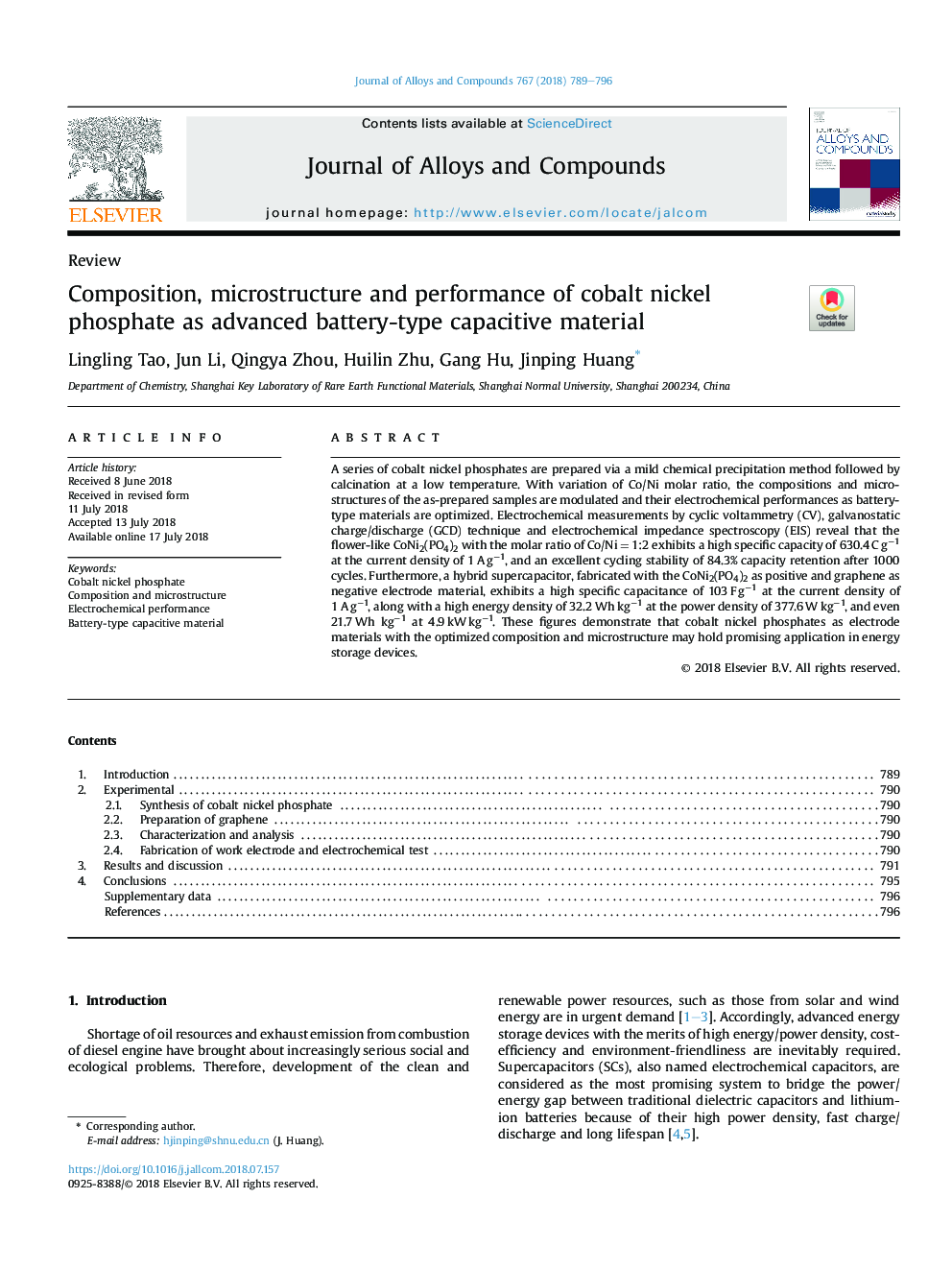| Article ID | Journal | Published Year | Pages | File Type |
|---|---|---|---|---|
| 7990398 | Journal of Alloys and Compounds | 2018 | 8 Pages |
Abstract
A series of cobalt nickel phosphates are prepared via a mild chemical precipitation method followed by calcination at a low temperature. With variation of Co/Ni molar ratio, the compositions and microstructures of the as-prepared samples are modulated and their electrochemical performances as battery-type materials are optimized. Electrochemical measurements by cyclic voltammetry (CV), galvanostatic charge/discharge (GCD) technique and electrochemical impedance spectroscopy (EIS) reveal that the flower-like CoNi2(PO4)2 with the molar ratio of Co/Niâ¯=â¯1:2 exhibits a high specific capacity of 630.4â¯Câ¯gâ1 at the current density of 1â¯Aâ¯gâ1, and an excellent cycling stability of 84.3% capacity retention after 1000 cycles. Furthermore, a hybrid supercapacitor, fabricated with the CoNi2(PO4)2 as positive and graphene as negative electrode material, exhibits a high specific capacitance of 103â¯Fâ¯gâ1 at the current density of 1â¯Aâ¯gâ1, along with a high energy density of 32.2â¯Wh kgâ1 at the power density of 377.6â¯Wâ¯kgâ1, and even 21.7â¯Wh kgâ1 at 4.9â¯kWâ¯kgâ1. These figures demonstrate that cobalt nickel phosphates as electrode materials with the optimized composition and microstructure may hold promising application in energy storage devices.
Keywords
Related Topics
Physical Sciences and Engineering
Materials Science
Metals and Alloys
Authors
Lingling Tao, Jun Li, Qingya Zhou, Huilin Zhu, Gang Hu, Jinping Huang,
